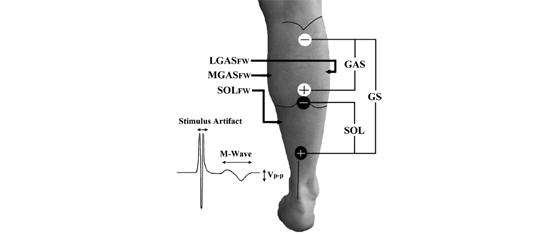
Abstract
Neuromuscular electrical stimulation (NMES) has previously been used to enhance venous return from the lower leg. By artificially activating lower leg muscles, venous blood may be effectively ejected from the muscle and adjacent veins. It could easily be assumed that combined NMES of the gastrocnemius and soleus would be the most effective single-channel application in this regard, as these muscles represent the largest muscular bulk in the lower leg. However, we have previously reported that soleus stimulation in isolation is substantially more effective. To understand why this is the case, we recorded fine-wire electromyography during NMES of the gastrocnemius and soleus muscles. We found that gastrocnemius and soleus stimulation are effective in eliciting selective stimulation of these muscles. However, combined stimulation of these muscles using a single set of electrodes was only capable in generating ~50% of the response in each muscle, insufficient to generate their theoretical maximum venous return.

